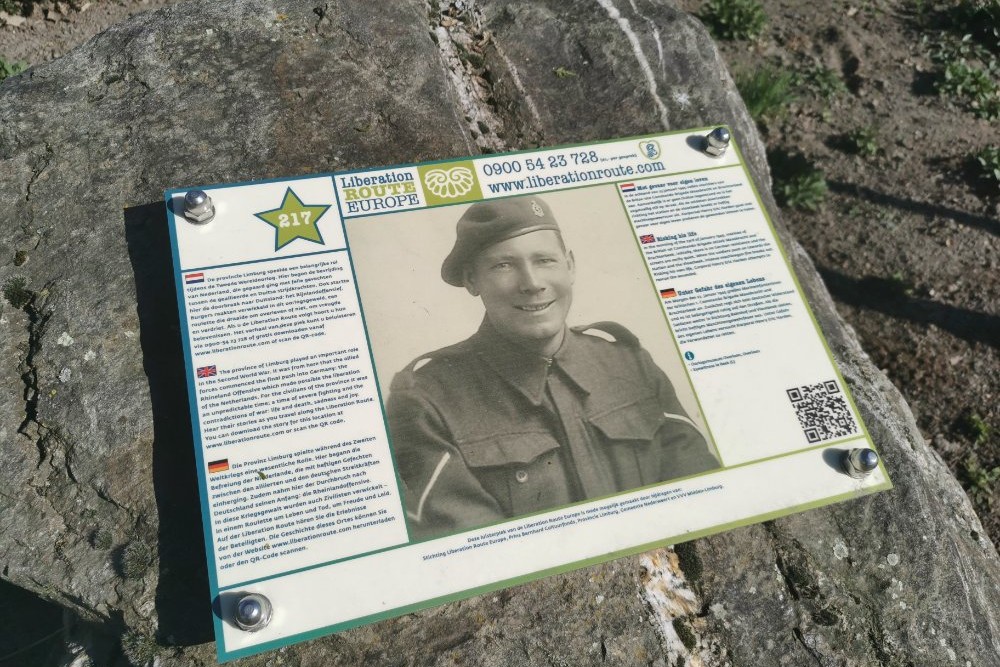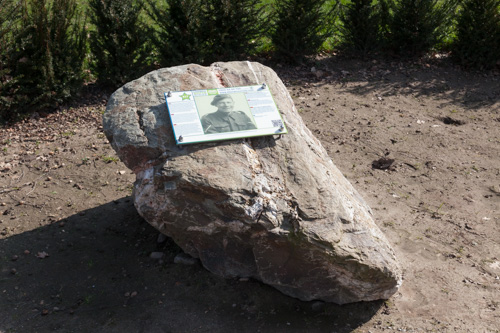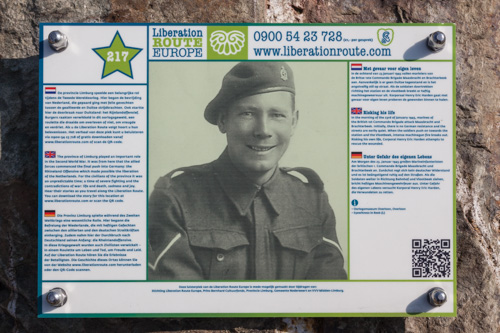Liberation Route Marker 217: Risking his life
Risking his life
On the 23rd of January 1945, Operation Blackcock, the Allied operation to expel German troops from the Ruhr Triangle between Roermond, Sittard and Heinsberg, has already been fiercely fought for over a week. After heavy fighting in the village of St. Joost the German forces have retreated behind the Vlootbeek between Maasbracht and Linne. They have set up an observation post in the Linne windmill.
In the morning of the 23rd of January 1945, marines of the British 1st Commando Brigade advance on Maasbracht and Brachterbeek. The streets are empty and it is eerily quiet. They soon reach the centre of Maasbracht. They then decide to push on towards the station and the Vlootbeek. A few minutes later, all hell breaks loose and the British come under heavy mortar and machinegun fire.
A few days earlier in the battle for St. Joost, the feared German paratroopers of Kampfgruppe Hübner paratroopers had suffered a defeat and, with those still able to fight, they have entrenched themselves behind the Vlootbeek and in the windmill.
The men of the 45th Royal Marine Commandos seek cover in the open field. They lie in the ice-cold snow and some are wounded.
From the first aid station, 32-year-old Corporal Henry Eric Harden sees the wounded cannot move forward or back. Risking his life, Henry Eric Harden recues one of the wounded from the field but is himself wounded in the process. He goes back twice out into the field to save the wounded men. For Henry Eric Harden, the attempt to save Lieutenant Corey proves to be fatal.
Eric Harden and his fallen comrades are placed in temporary grave in an orchard on the Kloosterstraat in Maasbracht. A year later, they are transferred to their final resting place, the British Military War Cemetery in Nederweert.
Audiospot - Risking his life
Liberation Route Europe is a certified Cultural Route of the Council of Europe. With hundreds of sites and stories in nine European countries, the route links the main regions along the advance of the Allied Forces in 1943-1945.
The entire route consists of themed routes that can be travelled by by hiking, walking, cycling and car. These routes pass numerous historical and interesting sites and tell stories from a multitude of perspectives that were important in the final phase of World War II.
Many routes feature listening spots, offering the opportunity to listen to a historical story at a location. In addition, many ‘Vectors of Memory’ have been placed, indicating that the passer-by is on one of the Liberation Routes.
The routes can be found on the Liberation Route Europe website or in the app through which many stories can also be listened to.
Do you have more information about this location? Inform us!
Source
- Text: TracesOfWar & Liberation Route Europe
- Photos: Lennard Bolijn (1), Arjan Vrieze (2, 3)
Nearby
Museum
Point of interest
- Asparagus Barrier Weert - Weert
- Cycling route Death Valley De Peel - Pilot's Monument (De Pelen) (#15) - Ospel
- Cycling route Death Valley de Peel - End Veencolony (#14) - Asten
Monument
- Liberation Route Location 7 - The Air War 1940-45 - Nederweert
- Liberation Route Location 9 - Liberation - Nederweert
- War Memorial Nederweert - Nederweert
Cemetery
- Commonwealth War Cemetery Nederweert - Nederweert
- Dutch War Grave Weert - Weert
- Graven French Refugees Weert - Weert
Remembrance Stone
Fortification
- Peel-Raamstelling - Kazemat - Nederweert
- Peel-Raamstelling - Casemate - Kampershoek
- Kazemat Peel-Raamstelling - Nederweert







